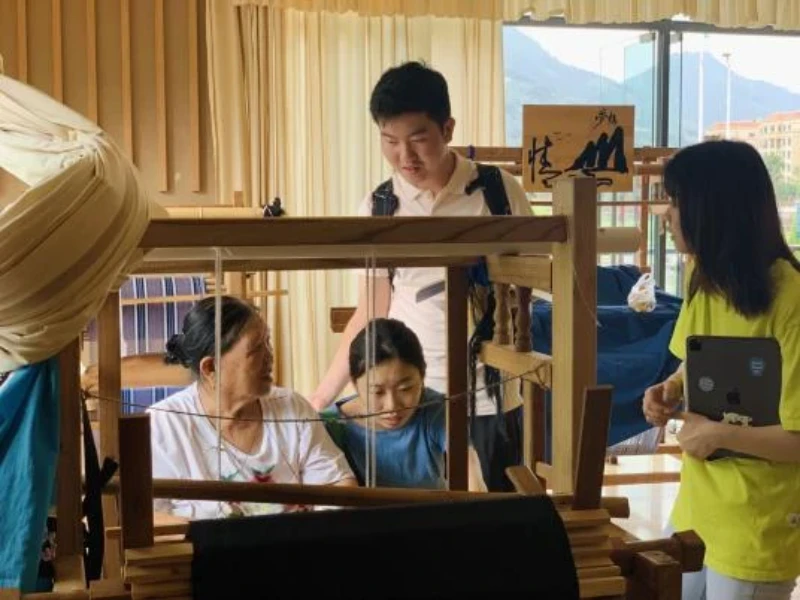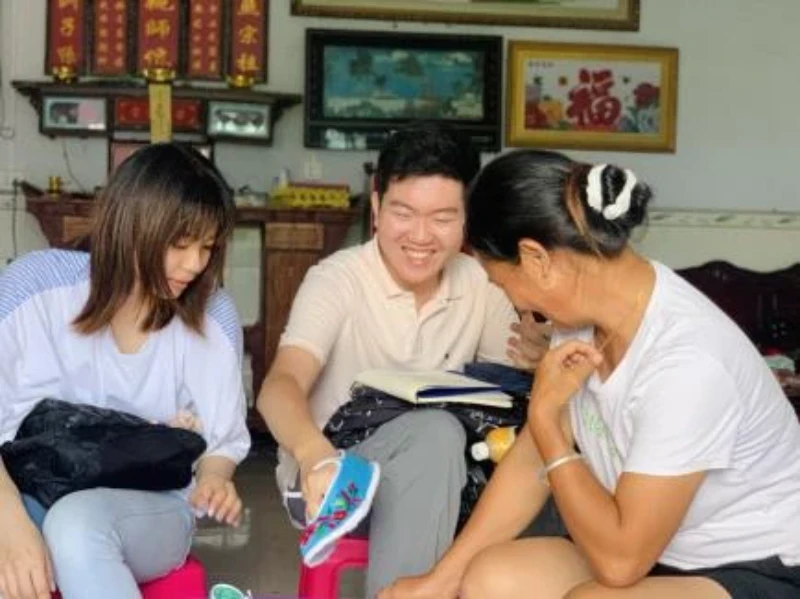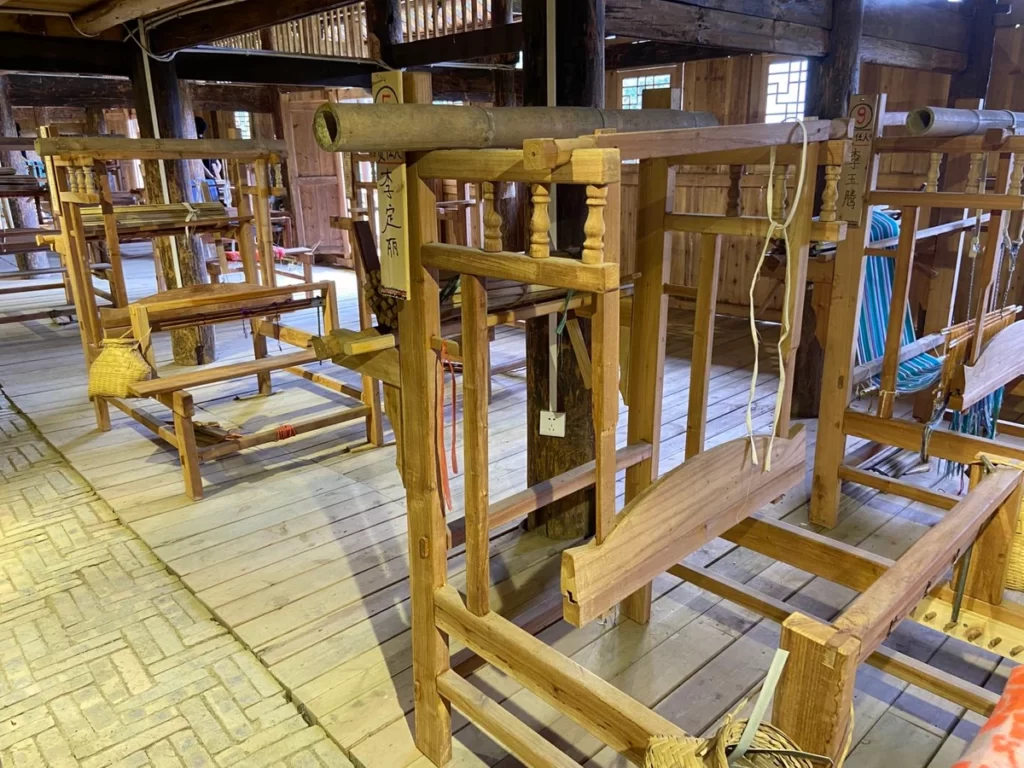By: Yu Wan, Honggu Zhou, Xiang Zheng, Jingyi Liao, Zihan Zhang
There are more than 5000 ethnic groups in the world. These groups are scattered in every corner of the globe. Throughout history, they formed their own culture, religion, and social structure that differ from the dominant group. Some groups have assimilated to the major population like African Americans, while most are still isolated because of geographic barriers like mountains, rivers in the rural areas. The minorities make up a little portion of a country’s population, so they are becoming marginalized. According to the Seventh National Population Census of China, the 56 minority groups’ population only make up 9% of the total population. The minorities do not have the same access as the major group to many social resources like education, health care, and employment.
In the minority groups, women are especially underprivileged because of internal challenges like ingrained stereotypes and social norms. In the patriarchal society, the cultural barrier confines women to secure their rights and cause them to have lower economic status compared to men (Wang, 1995). Their economic status is interlinked with their social status. In many minority groups, women face double exclusion. They are not only restricted to their domestic roles but also experience wage and employment discrimination. Research shows that at the workplace, women are 24% more likely to permanently lose their jobs compared to men (Dang, 2020).
As a solution, intangible cultural heritage can be utilized to achieve the aim of economic empowerment of women. Many minority groups have established their unique cultural industries. As a legacy, the cultural products should be preserved and transmitted to other places. Some intangible cultural heritage, for example, is produced by ethnic groups in various forms. Traditional crafts in most places are specialized by women. The crafts can be seen as a source of economic income for ethnic group women. Chinese charity program “Mom Handworks” has established 21 cooperations in 8 provinces, provided more than 10,000 working opportunities for minority group women. They invited well-known designers to cooperate with local women, opened up a market of intangible cultural heritage products with modern aesthetics (Zhou, 2018). Only when women played a role in promoting the local economy, they can raise their voice in society and further procure other rights that they were deprived of. Women will have access to other resources like land, credits, and assets which can earn them higher social status (Puri, 2017). Therefore, resolving poverty is the priority task when coming to the question that how to empower ethnic minority group women. Intangible cultural heritage, as a result, is an art form that needs to be preserved and an economic opportunity for women to grasp.
Besides “Mom Handworks”, at the provincial level, effective programs with the notion that preserving cultural heritage can be a way for women to improve economic and family status are implemented in areas like Guizhou, which is a place that contains many minorities. In response to the fact that Guizhou has a large proportion of ethnic minorities and rich intangible heritage resources, the Women’s Federation of Guizhou province initiated, promoted, and implemented the Guizhou Women’s Featured Handicraft Industry Splendid Plan (hereinafter referred to as the “Splendid Plan”), aiming to empower women through the media embroidery. Since the start of the project—in 2013, the Guizhou Provincial Women’s Federation initiated the establishment of the Guizhou Provincial Women’s Handicraft Association (Zhihu, 2021). The Guizhou Provincial Women’s Federation and the Provincial Science and Technology Department invested 3 million yuan to establish the “Guizhou Women’s Innovation and Entrepreneurship Cooperation Fund”, which implemented 46 projects, supported batik anti-decolorization technology, innovative embroidery techniques integration research, and transformed and promoted more than 30 scientific and technological achievements. Implemented women’s manual poverty alleviation actions, Guizhou province established 8 provincial-level “Splendid Plan Demonstration Counties for Poverty Alleviation” in Taijiang, Ceheng, Sandu, Zhijin, Songtao, Zhenning, Rongjiang, and Danzhai, and established more than 1,000 “Qiaoshou poverty alleviation base” as well as 1,354 women’s characteristic handicraft enterprises and professional cooperatives (Colorful Guizhou Web pages, 2020; Zhihu, 2021). Significant success has been attained. The value of output in the province’s women’s characteristics handicraft industry has reached 6 billion yuan and women employment skyrocketed—there are nearly 500,000 people engaged in the characteristic handicraft industry and auxiliary industries in Guizhou province (Colorful Guizhou Web pages, 2020).
Taijiang County’s Ethnic Handicraft Art Industry Association sheds light on how the development of women’s characteristics handicrafts industry boosts the economic empowerment of women. Through the establishment of the “enterprise interaction, industrialization promotion, and integrated linkage” mechanism, self-employed and family handicraft workshops have been established to join enterprises, and 20 leading enterprises of ethnic handicraft have been cultivated. 25,273 ethnic embroiderers have been employed with an increase of 2,836 yuan per capita in average annual income (Taijiang County People’s Government, 2019). Researches demonstrate that over the past three years, Taijiang County’s Ethnic Handicraft Art Industry Association developed Taijiang country’s women characteristics handicraft industry to a new and high level through methods like strengthening the industry platform, promoting the distribution of resources, and building learning platform, etc. (Chen, 2020). Meanwhile, the organization also contributed to sectors like cultural bequeathing, culture and tourism’s integral developing, poverty alleviating, new jobs created for women, and leftover children problem solving, etc. (Chen, 2020). More importantly, the association encourages ethnic embroiderers to sell through e-commerce platforms to realize the leapfrogging of products into commodities and online products (Taijiang County People’s Government, 2019). With help from Taijiang County’s ethnic Handicraft Art Industry Association, ethnic embroiderers increase their competitiveness in the market by opening e-commerce sales platforms (Taijiang County People’s Government, 2019). At present, 8 companies have opened e-commerce sales platforms, with total sales of more than 14 million yuan (Taijiang County People’s Government, 2019). It is Taijiang County’s Ethnic Handicraft Art Industry Association that provides a place for ethnic embroiderers to explore a composite sales channel that combines a dearer system and a direct sales model, which completely transform into a “self-sufficient” operating status of embroidery in Taijiang (Taijiang County People’s Government, 2019).
Besides Taijiang County, the “Splendid Plan” developed successfully in Ceheng Country as well. The counterpart of Taijiang County’s Ethnic Handicraft Art Industry Association in Ceheng is “China Bouyei Square Jinxiu Square”(hereinafter referred to as the “China Bouyei Square”), which was established in 2016 with the support of local government. It is a place that provides ethnic women with opportunities to work and employ their traditional handicraft skills like weaving, embroider, tie-dying, etc. The founder of the company is Nanyun Ceng, who herself has had a strong interest in traditional culture since childhood and like embroidering, weaving, and cutting. Although her original goal is to preserve the intangible culture like embroidery, she successfully empowered local ethnic women to a great extent. Until 2019, China Bouyei has trained 3,699 ethnic women, employed 573 of them and female embroiderers’ average monthly income goes beyond 2,800 yuan (Qianxinan Daily, 2019). In other words, those ethnic embroiderers can have a respectable daily income of around 30 to 45 yuan based on the quantity and quality of clothing they weaved that day. It is China Bouyei that changed the life of many ethnic women. Mrs. Shen, a 72-year-old ethnic embroiderer employed in China Bouyei, is one of them. Compared to her previous situation, with no job and no income, she can earn 1,170 yuan every month, which is enough for all daily living expenses. Not only that, but she also enjoys working and communicating with other ethnic embroiderers who she has not met before. Because of the nature of China Bouyei—a combination of company and home workshop, ethnic embroiderers find it to be not only a working place with decent income but also a pleasant communication center with “families” around. A female embroiderer once said that “there is no difference between embroidering here and at home. I just feel lonely at home, you know, but it is not the case here.”

Attempt like using intangible cultural heritage to empower women is not limited in provincial-level “Splendid Plan Demonstration Counties for Poverty Alleviation” like Taijiang and Ceheng County. Surrounding villages like Banwan applied the same methodologies in women empowerment and achieved success. Mrs. Li is a perfect Banwan instance to illustrate how embroidery help elevate the economic status of ethnic women in villages instead of the more developed county. Unlike other ethnic embroiderers in Banwan village, she goes another way—instead of making embroidery purely for satisfying family needs after taking the training program conducted by the government to Suzhou City for one month, she goes things differently by selling her embroidery, mainly shoes, to others outside the village in nearby towns. “She makes the business so much bigger and truly has a keen sense of commerce,” commented cultural observer, Mr. He, in Banwan. Li expanded her embroidery business to a nearby town right after she earned a stable income. It is her embroidery skills that enable her to elevate her family status by becoming the major earner of her family. “It is crucial for other ethnic embroiderers to spread like this, rather than always hiding, so that people, especially tourists, can be attracted.” Mr. He demonstrates from the lesson of Li.

However, ethnic embroiderers like Mrs. Li, who organically combined her embroidery ability and business management mind, are still rare, especially in less developed areas like Banwan villages. Although there is a similar workshop in Banwan village called Jinxiu Square, it is less developed compared to the one in Ceheng County. Specifically, there are only some machines and products, but neither female embroiders nor consumers. In those areas, to most ethnic embroiderers, who lack acute commercial mind and management tactics to organize Jinxiu Square or their own business, achieving economic empowerment through preserving intangible cultural heritage like embroidery is still in a preliminary stage. As was stated by one of the ethnic embroiderers Mrs. Huang, who makes traditional clothes at home, “villagers have skills of making ethnic embroidery, clothes, and shoes; however, they do not have the ability to manage Jinxiu Square (a company-like workshop).” Moreover, she frequently expressed her hope for the development of Jinxiu Square and emphasized her incapability of managing such a company. It is the lack of management talents that leads to the failure seen in the Banwan village: there is no way to set up a sound system and operate a model like China Bouyei Square in Ceheng county.

What are the deep-rooted reasons behind the commonplace failure seen in Banwan village? What are the impediments and obstacles faced when localizing the mechanism, organic combination of preserving intangible cultural heritage, and women empowerment, in areas like Banwan? Several reasons can be concluded. One essential factor to obtain success in implementing mechanism is leaders or management talents. There exists a huge gap between villagers and visitors, just like what one of the ethnic embroiderers stated, “Visitors know about Jinxiu Square, but they see nobody in that square. As a result, they are not able to buy traditional clothes, even if they have money in their pockets.” The lack of management talent left the responsibility of organizing all women and promoting Jinxiu Square to no one. Consequently, there is no way for those ethnic embroiderers to use their embroidery ability, not to mention improve their family status through earning money.
The absence of a leader leads to another problem—it is impossible to standardize the size, quality, and selling price of those embroideries. Although it seems to be a trivial errand, it is the foundation of a market. As embroidery is normally made at home workshops, the quality, price, and size vary in every single one of them. From the perspective of chaotic price, according to Zhengfang Li, who is the founder of the organization “big mountains small love”, female embroiderers do not know how to set a sound price for their products and the reason is that those ethnic embroiderers are unfamiliar with market mechanism as well as other factors like demand and supply. He proceeded by mentioning that some embroiderers even think their products are superior to others’ so that they sell them at a higher price, which breaks the balance of the market. In the aspect of size, “There are no professional staffs to take charge of standardizing the size of clothes, gloves or shoes,” said ethnic embroiderer Jinju Huang, A standardized size system is vital for consumers as the size they are given by different producers varies significantly so that they can’t have the suitable size they ask for in Banwan. As evidenced from previous examples, it is easier to sense the necessity of the emergence of talents to fix the failure that existed in embroidery markets as well as leaders to manage and develop Jinxiu Square in the village.
The other indispensable factor to secure the success of such a business model implementing in villages is professional training. Although it is necessary, only a small number of training programs provided by the government are offered in the village. A female embroiderer once stated that even if the training related to traditional tailoring and embroidery is free with free meals offered and subsidies are given, few ethnic embroiderers are willing to attend the training and the reasons are various. Based on what the village head has said, one of the reasons is that “people do not have confidence or hope in Jinxiu Square since the Square in the village has not developed well yet,” which means those ethnic embroiderers are worried about the effectiveness of attending such programs as they may not be able to apply what they learned in producing products in Jinxiu Square, not only because Jinxiu Square is in a preliminary state without management but also the time spent on training may not be paid back with no jobs offered in Jinxiu Square. Some are concerned about the length of training. For them, who are both a housewife and an embroiderer, it is not likely for them to leave home to attend a one-month training and leave all household drudgery behind.
The other major reason is that sometimes people feel excluded when attending such training. Those training sessions are normally nationwide so that for ethnic embroiderers who attended, they need to be fluent in mandarin; however, the lack of education of ethnic embroiderers prevents them from speaking mandarin fluently. As a result, “they couldn’t communicate with other ethnic embroiderers who are from Miao, for example, and all ethnic groups do not understand each other well,” presented by Mr. He, “Ethnic embroiderers in Banwan rarely receive an education.”
It is especially weak when comes to improve embroiderers’ awareness of attending training to improve themselves in Banwan village. The missing of information session leads to the ignorance of those ethnic embroiderers about how important professional training can help them with their improvement in techniques, not only in the embroidery aspect but also in the business management aspect. The cycle thus becomes “impossible” to break as ignorance will prevent them from attending those useful training courses, not to mention acquiring the skills for setting up their own business and earning money by themselves.
However, the local government and embroiderers are making efforts to break the cycle. Through opening embroidery experience workshops, more tourists get to know embroidery. Through designing modern embroidery products, more people love to buy embroidery products. Embroiderers are making more money doing embroidery than before.
Still, there is indeed a long way to go before every ordinary ethnic embroiderer can use their talents to empower themselves economically with stitches and threads. Nevertheless, in Guizhou, those embroiderers have already started to walk on this road. They will lead this way and inspire more and more ethnic women to seek for their path to empower themselves through employing their abilities and talents.
References
Dang, H.H. & Nguyen, C.V. (2020, October). Gender inequality during the COVID-19 pandemic: Income, expenditure, savings, and job loss. IZA Institute of Labor Economics.
Puri Lakshmi. (2017.October 17). Women: Major drivers & beneficiaries of poverty eradication – world. ReliefWeb. https://reliefweb.int/report/world/women-major-drivers-beneficiaries-poverty-eradication.
Wang, J. (1995). Modern Thought About Chinese Ethnic Minority Group Women. Guizhou Minority Group Study, 49–49. https://doi.org/10.13965.
Zhou, H. (2018, June 4). The Power of Women’s Intelligence in Intangible Cultural Heritage Industry. People’s Daily Online. http://country.people.com.cn/n1/2018/0604/c419842-30034512.html.
陈玥锟. (2020). 新时代贵州省妇女特色手工产业发展初探——以台江县民族手工艺品行业协会为例. 贵州民族研究, v.41;No.231(05), 95-99.
多彩贵州网. (2020, December 28). 贵州“锦绣计划”助推50万人脱贫 产值达60亿元. Retrieved August 23, 2021, from http://www.gog.cn/zonghe/system/2020/12/28/017803890.shtml.
贵州省妇联. (2021, April 17). 巧手铺锦绣兰心绘生活——“锦绣计划”带动50万妇女就业. Retrieved August 23, 2021, from https://zhuanlan.zhihu.com/p/365530569.
黔西南日报. (2019, November 18). 册亨中华布依锦绣坊 带动三千绣娘灵活就业. Retrieved August 23, 2021, from http://www.qxnrb.com/epaper/qxnrb/html/2019-11/18/content_88941.htm.
台江县人民政府. (2019, May 21). 台江县发展“指尖上的经济”助推农村妇女增收致富. Retrieved August 23, 2021, from https://www.sohu.com/a/315361177_120093415.
